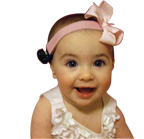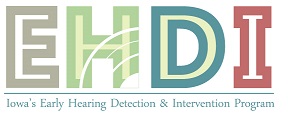Common Myths versus Clinical Facts
Making decisions throughout the hearing screening process requires accurate information. Explore the common misconceptions surrounding hearing loss below.
|
Myth: There is no rush to identify hearing loss - it can wait.
|
Fact: Children identified with hearing loss after 6 months of age are more likely to have speech, language, and cognitive delays than children identified before 6 months. Children identified early can avoid these delays through evidence-based early intervention programs.
|
|
Myth: Hearing loss does not occur very often, so newborn hearing screening is not necessary.
|
Fact: Hearing loss affects about 1 to 3 children per 1,000 births, and is considered to be one of the most common birth defects.
|
|
Myth: Parents can tell if their child has a hearing loss by the time their child is 2-3 months old.
|
Fact: Before newborn hearing screening, most children were not found to have a hearing loss until 2-3 years of age. Children with milder hearing loss weren't found until 4 years of age.
|
|
Myth: Using hearing loss risk factor assessments will identify all children with hearing loss.
|
Fact: As many as 50 percent of infants born with hearing loss have no known risk factors.
|
|
Myth: Babies need to be sedated to complete ABR testing.
|
Fact: Babies younger than 3 months can typically be tested without need for sedation.
|
|
Myth: Children younger than 12 months cannot be fitted with hearing aids.
|
Fact: Children as young as 1 month of age can now be fit with and benefit from hearing aids.
|
|
Myth: If there is no family history of hearing loss, there is no need to have your baby screened.
|
Fact: 95 percent of babies born with hearing loss are born to parents with normal hearing.
|

